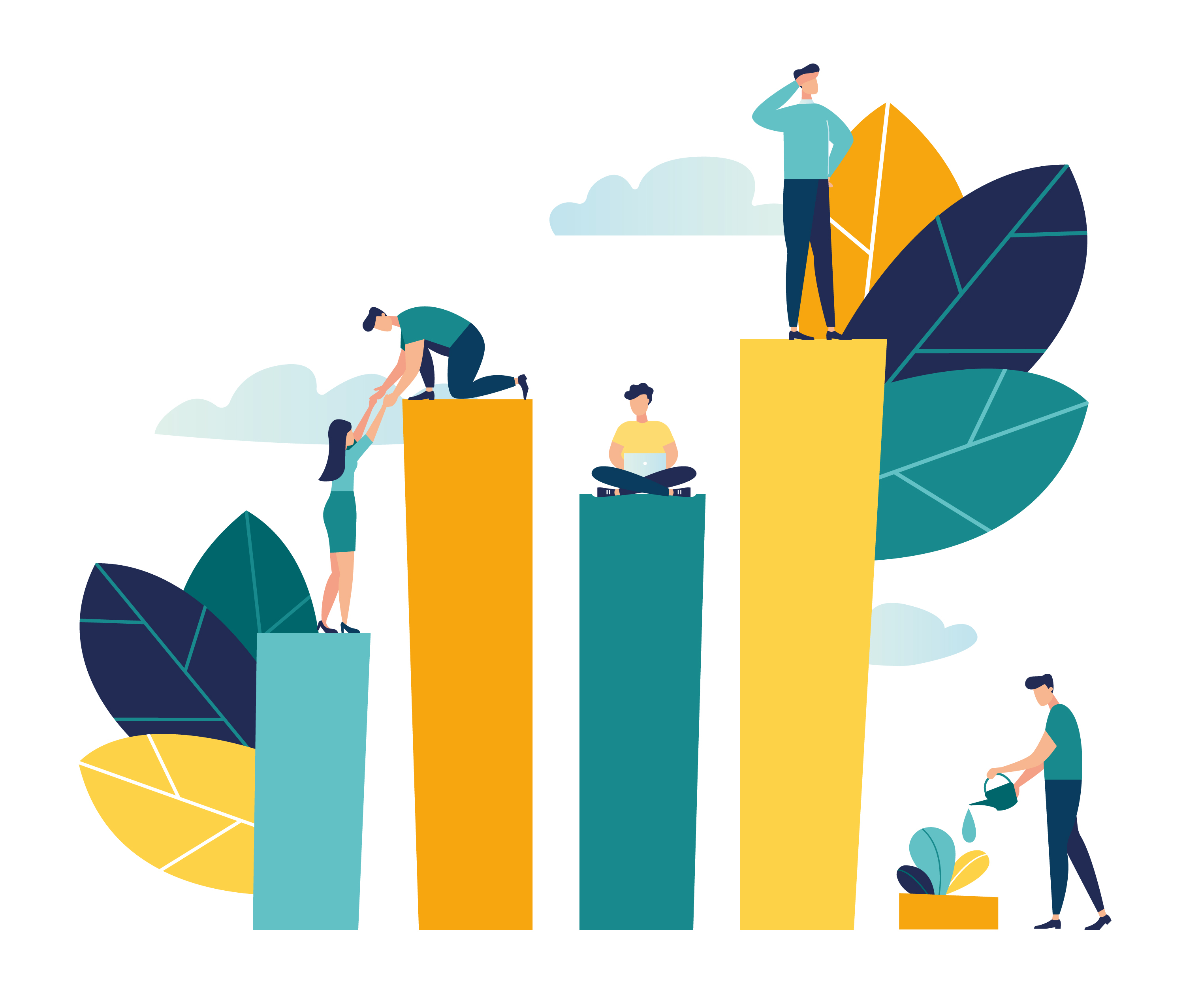With an ever-increasing demand for skilled workers in America, to the tune of 7 million open jobs, it is evident we lack the talent supply to meet current hiring needs across most sectors. A massive skills gap is projected to leave an estimated 2.4 million positions unfilled between 2018 and 2028, with a potential economic impact of $2.5 trillion, according to Deloitte.
At the same time, we are in one of the most challenging environments in U.S. history given not only the speed at which disruption caused by technology is affecting the workplace, but also the acceleration in the pace of change. Navigating this landscape requires businesses to equip current and future workers with the skills necessary to take on new roles and to help upskill existing workers to offset talent shortages.
The Benefits of Greater Integration of HR and Learning. 
While the tight labor market and skill gaps may be haunting recruiters and HR decision-makers, collaboration between the HR function and Learning and Development (L&D) teams can help alleviate many talent challenges – including identifying cost-effective investments in upskilling internal candidates for hard-to-fill roles.
Meanwhile, greater collaboration between HR and L&D teams can better align the organization’s talent needs with the training and development that is offered. In fact, there is a significant correlation between offering comprehensive learning and development opportunities and becoming a high-performing organization. A survey by the Aberdeen Group found that up to 80% of the highest performing organizations had integrated L&D with other aspects of the organization, such as recruitment, onboarding, performance management and succession management.
3 Key Trends Pointing to Improved Collaboration.
Greater collaboration will encourage better talent management, help to close skills gaps and ensure a uniform approach to skills development for employees. In turn, companies will benefit from cost reductions through minimized duplication, standardization of approaches and facilities for shared reporting. Here are 3 trends that are influencing the need for closer partnerships between HR and L&D.
1. Improved Data and Assessments. According to LinkedIn’s Workplace Learning Report, the number one priority for talent developers is to identify, assess, build and track competencies among their workforce. The good news is data capture and analysis has become much more sophisticated and effective, as well as assessment solutions to measure competencies. Through more effective talent and development assessments, L&D professionals have better, more accurate data to provide deeper insights into where skill gaps exist and the role they can play to help close them.
2. More Personalized and Tech-Enabled Learning. Technology has afforded a wider selection and effective use of learning and development tools, as well as the ability to track and measure usage and outcomes metrics. Upskilling workers has become more efficient through online training opportunities as content can now be more accurately identified and personalized to close specific individuals’ skill gaps. Furthermore, it has allowed HR and L&D to create more comprehensive, ongoing learning programs to help drive employee engagement, satisfaction and retention. In fact, nearly 80% of employees say that when searching for a job, it is important that an employer offers formal training programs to their employees. And, 93% of employees say they would remain at a company longer if it made investments in them.
3. Growing Need for Upskilling. Two macro trends are driving a vital need to upskill today’s workforce – the arrival of Gen Z and Millennials, and evolving roles in a digital landscape. While Gen Z and Millennials bring an unprecedented level of technical and digital skills to the workforce, there is growing research that these groups will require improvements in interpersonal and communication competencies. In fact, nearly two-thirds of L&D leaders believe that Gen Z will require extra support for the development of soft skills.
Meanwhile, new technologies are changing the face of our workforce. For example, a recent report by the World Economic Forum suggests that while we stand to lose 75 million job roles by the shift in the division of labor between humans, machines and algorithms by the year 2022, we will add 133 million new job roles – netting us 58 million more jobs than before. And, the skills and requirements to perform these jobs are also changing, and quickly.
The good news is L&D leaders hold the key to solving these challenges, as starting or expanding training programs to help improve the skills of new hires was one of the five most effective remedies for closing skills gaps. Through a combination of talent and development assessment data and greater collaboration between HR and L&D, improved learning pathways can be created.
Encourage Lifelong Learning
Arguably, with the ever-changing landscape in which we now find ourselves, the biggest skill to encourage among our workforce is the ability to learn. Employees must embrace lifelong learning, so their skills don’t lose currency and are always adapting. As Deloitte puts it, digital skills must marry human skills. In fact, according to most experts, the ability to utilize soft skills such as, critical thinking, complex problem-solving, emotional intelligence and creativity will rise in importance. These will be balanced alongside hard skills such as programming, technology and digital skills.
There are no two functions better equipped to achieve these goals than HR and L&D, if they are aligned and collaborating to inform better learning outcomes. When HR taps into the insights and experience of their L&D counterparts, and vice versa, they will close skills gaps quicker and take new hires from good to exceptional.
